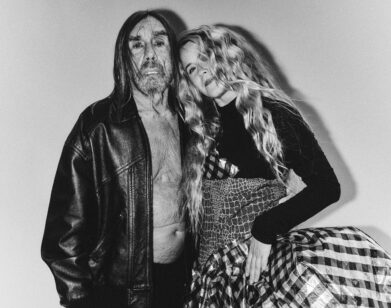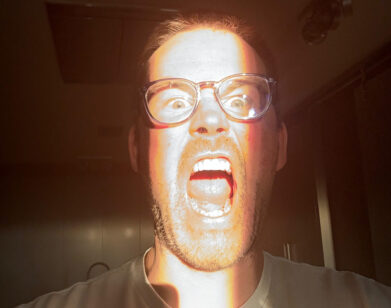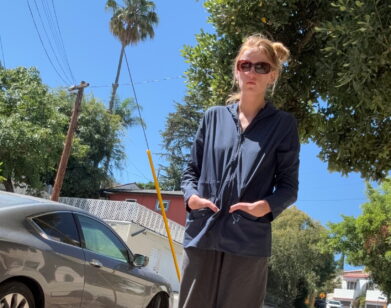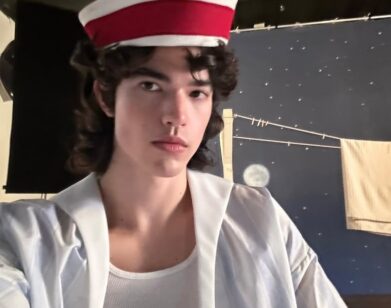Wolfe Tracks
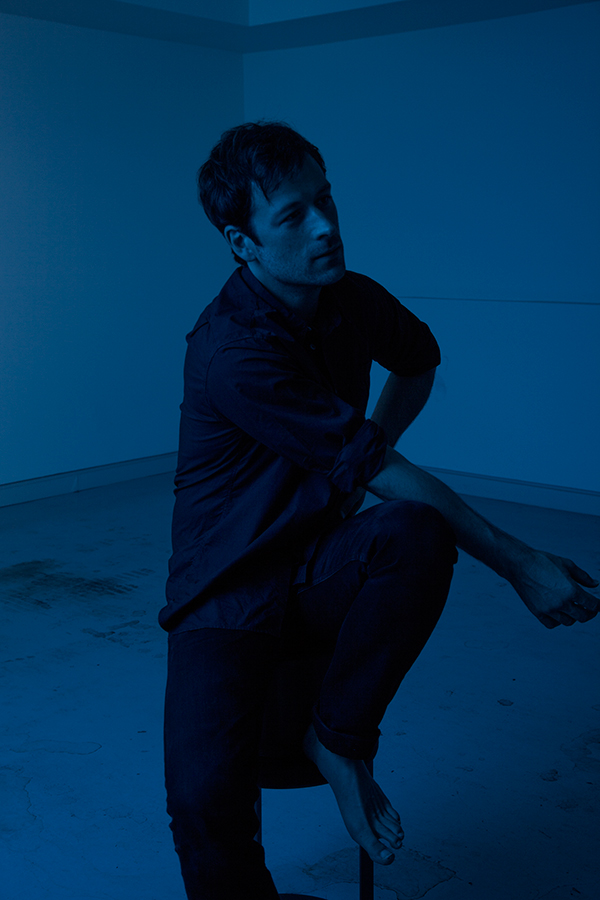
ABOVE: HENRY WOLFE. PHOTO COURTESY OF JACQUELINE DI MILIA.
Compulsive songwriter Henry Wolfe’s confident and strong performances show off a young musician in charge of the world. Or at least his corner of it. His lyrics pulse with gentle love and non-casual loss, all very delicate but tough, too.
Wolfe grew up in Los Angeles and Connecticut in a creative family (his mother is a famous actress, his father a visual artist). He graduated from Dartmouth, made music in New York, and decamped for Los Angeles as a solo artist early in his career. His days are filled with getting his music and lyrics just right. But this week, he is ready to jump the fence and go on tour in California with Dawes.
Directed by Ben Kutsko, Wolfe’s new video for “Encino” is optimistic but cautious. Stuck in the San Fernando Valley, the singer-character flops between two realities. He doesn’t know if he’s in paradise or in a place where dreams are dead. Sitting in limbo at the end of the line, he holds out for the girl he can’t get out of his head played by actress Jena Malone. “Encino” is the titular track on Wolfe’s upcoming, four-song EP—the 34-year-old musician’s first EP since the acclaimed Linda Vista (2011). The video officially comes out tomorrow via the Museum of Contemporary Art, Los Angeles’ MOCAtv. Until then, you can stream it exclusively below.
DON CUMMINGS: I love these new songs. Who are the new musicians you’re working with?
HENRY WOLFE: Thanks. “All I think About is You” I did with my friend Malachi Delorenzo. We recorded it at home in Pacific Grove where I was living last year. The rest of the songs were recorded in L.A. The rhythm section was Josh Adams playing drums, Keith Karmen on bass, and Tyler Cash on keys. The songs were produced by Thom Monahan. He and I collaborated on the arrangements.
CUMMINGS: Are you a sound first or story first guy? How do you run with it?
WOLFE: Definitely the sound for this record and for most of the stuff I’ve done. The lyrics come last. I have melodies for the songs in mind. When it comes to actually writing words, I like to sing along to the tracks when they’re at a state that is as finished as they can possibly be. Whether that’s singing along to demos I make at home or when we’re working in the studio, I try to get as many of the instruments recorded as possible before I come up with the lyrics. I usually sing gibberish along with the tracks and then when I land on a phrase that I like I use that as the foundation and build from there.
CUMMINGS: Your influences include Harry Nilsson, Neil Young, and the iconoclast Arthur Russell, among others. But the California coast and geography in general grab at the core of your latest songs. Why is this geography pulling at you?
WOLFE: I tend to be drawn to songs and write songs that are rooted to a sense of place—for some reason this tends to be a source of lyrical inspiration. The music that I’ve made, especially on this album, has been informed by that landscape. You have this urban, sprawling, almost featureless grid of light and traffic, all these cars, and it’s sort of drab. There are billboards everywhere. Then, you drive for a half an hour and you’re in epic dramatic mountains or at the ocean. It’s extremely romantic. That kind of tension between the mundane suburban landscape and the epic natural beauty of the West is interesting to me.
CUMMINGS: What was the inspiration for the song, “Encino”—how did you put it together?
WOLFE: That started from Tyler. He sent me a sketch of a song he was working on and there was a drum loop that he used that I thought sounded really cool so I isolated it and built the arrangement of the music from there. The music ended up kind of sweeping and dramatic, so when I approached the lyrics I wanted to inject some kind of counterpoint to the musical landscape of the song. I just saw this Nick Cave documentary and he says that to him, counterpoint is the secret in songwriting. That struck me as very true and something I’m drawn to when I write the words, to get a balance between the music and the lyrics so that one informs the other. I set the song in the San Fernando Valley because the character is living in a kind of purgatory and that landscape, being a valley, is an in between place. That’s where the person lives metaphorically. He’s stuck in the valley.
CUMMINGS: Where did you shoot the “Encino” video? I’m a fan of Jena Malone.
WOLFE: We shot it at a studio in downtown L.A. and at the director’s house. Jena is one of the sweetest most generous and professional people I know. She did the video as a favor, which was just amazing. I was hugely grateful to her for that.
CUMMINGS: Why did you pick these other guys to appear along with you?
WOLFE: They’re friends and friends of friends. The preacher in the beginning is my friend Charlie Wadhams, who’s a songwriter that I really love. He has been in many videos by musician friends of mine in L.A. It’s like a video isn’t complete if Charlie doesn’t make a cameo. For me, I just wanted to be another member of the cast. I didn’t want to be the main character because I don’t want to be confused with the singer in each song. I’m singing it, obviously, but the character is not me. I’m writing from my imagination and I want to convey that.
CUMMINGS: What influence did MOCA have on the process?
WOLFE: MOCA got involved after Ben Kutsko, the director of the video, had been talking with them about a collaboration. When Ben finished the video he showed it to them and they were interested in premiering it.
CUMMINGS: You just had a music and video light show in Los Angeles to accompany some of your latest songs. Will you do it again, adding any other elements?
WOLFE: I’ve been working with a graphic artist here in L.A. named Elliot Glass and he’s created visuals, videos, and other things that integrate directly with the songs. They’re synchronized. When the videos change, they match the dynamics that are happening sonically. We show the videos while we perform and I’m interested in conveying the stories in the songs visually as much as sonically or in the way that the songs are performed by the band. It’s kind of like performing a live score to a silent film.
CUMMINGS: This all sounds very theatrical, yet your latest songs are poetic and moody with strong drives that can stand alone and tough, without any fuss. Your songs have been in movies and you score films. How do you like to do it?
WOLFE: The process isn’t too different from the process of my other writing. I play around with instruments and sounds and when I find one that seems to match the picture that defies explanation, but just seems to work, I use that sound as a foundation and build from there. I just try to find that moment where it clicks. That’s the first entrance into the song. I scored a short silent film for Aperture Magazine last year with my friend Phil Carluzzo. It’s this film from 1920 called Manhatta by Charles Sheeler and Paul Strand. It’s a 10-minute silent film and one of the first abstract art films that was made. We’re going to perform it at the Philadelphia Museum of Art on October 16 as part of a show on Sheeler’s work they’re having at that museum.
CUMMINGS: I’ve had the privilege to sample the songs on your upcoming EP. They are all insistent but not aggressive. Can you tell me if this is some kind of mating call?
WOLFE: If the songs sound romantic that’s because they are about romance. That’s the subject matter. At the same time, I don’t think of them as a mating call. I think of them as a little bit more introspective than that. They’re meditations on the concept of romance. You know, why do fools fall in love and out of love?
CUMMINGS: “Miracle Mile” is complicated and multilayered with a surprising sound wall. It builds and falls apart with haunting harmonies, a steady beat keeping it together. It’s beautiful and on the edge of terrifying. Where do you want to take us with this one?
WOLFE: When I was writing this I was reading about the Romantics and the idea of the sublime. You know, Wordsworth, Coleridge, all that—and the idea of fear and ecstasy. How falling in love is almost a sublime experience of elation and at the same time it has this immense existential fear. Like standing on the edge of a cliff. Like [the philosopher] Kierkegaard says, that experience is at once terrifying and exhilarating. But you have the power. You can jump off the cliff or not. It’s your decision. When I was making the music of “Miracle Mile,” I was in a new relationship and my girlfriend was living in Big Sur so I was driving up to visit her from Los Angeles. Driving along those epic coastal cliffs on Highway 1—I wanted to make music that evoked that landscape.
CUMMINGS: It’s Music Bingo at the mess tent and you filled your card before anyone else. What’s in the prize bin?
WOLFE: I have a few things. It’s hard to narrow it down. Here’s three: A new surfboard. A time machine. And a marimba.
HENRY WOLFE’S CALIFORNIA TOUR BEGINS ON WEDNESDAY, OCTOBER 8, AND HIS EP ENCINO COMES OUT NOVEMBER 11. FOR MORE INFORMATION, VISIT WOLFE’S WEBSITE.


